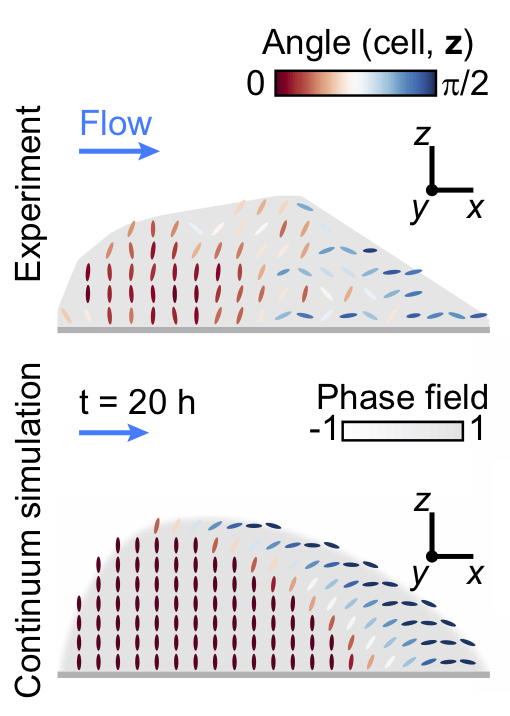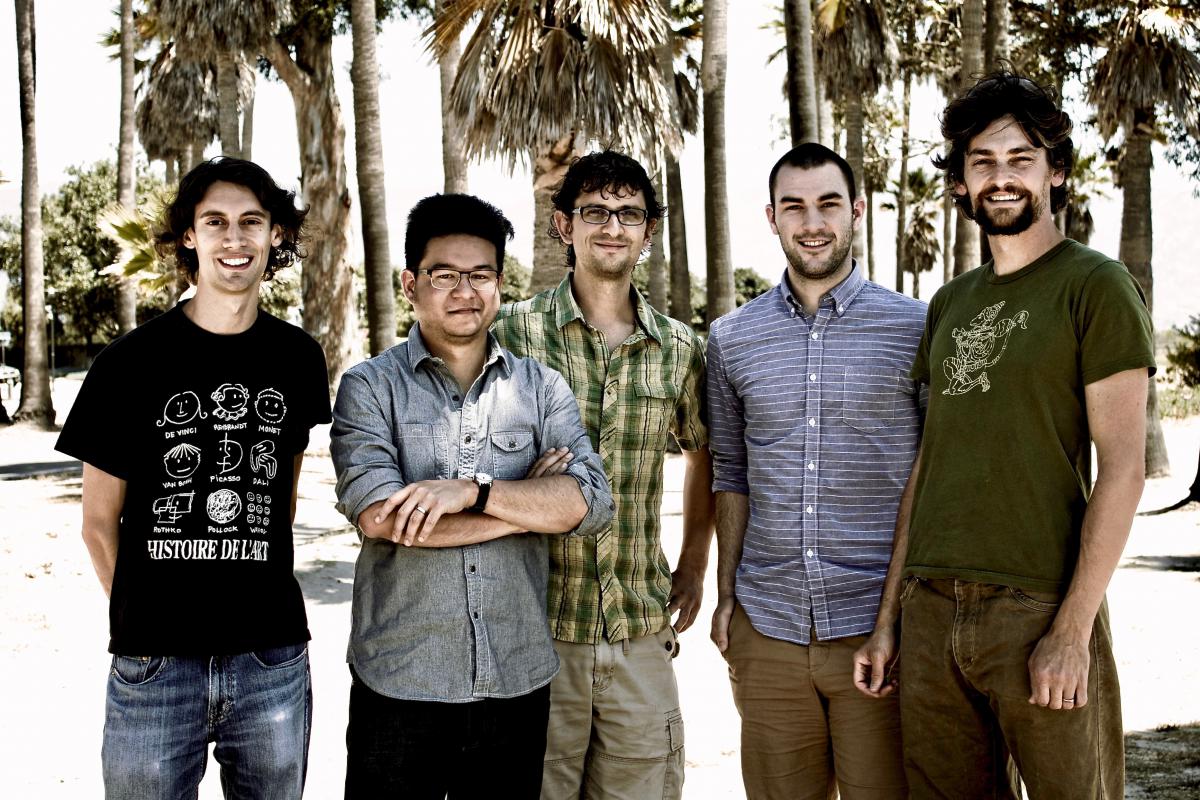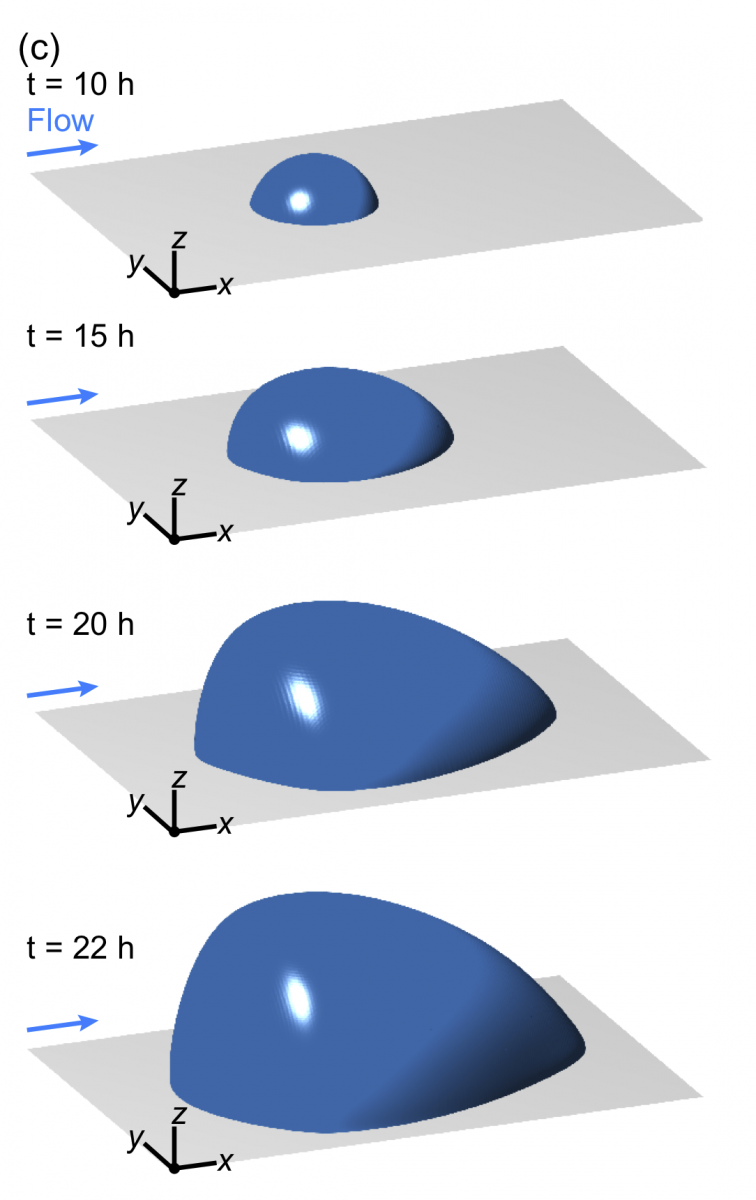The 2014 Wave-Flows program at the KITP was the ideal place to formulate Dedalus, an open-source computational framework that solves intricate classes of problems accurately and efficiently. Potential applications for Dedalus include fluid, chemical, radiation and biological transport problems in stars, planets, and laboratories.
Among geophysicists, climate scientists, plasma physicists and astronomers, the five collaborators (Geoff Vasil, Ben Brown, Keaton Burns, Daniel Lecoanet, and Jeff Oishi) came together as the Dedalus Project. Named after a James Joyce character, Dedalus represents “important ideals for us in terms of inventing something new, not bound by the baggage of past practices,” explains Ben Brown. “The original Dedalus of Greek myth (Joyce’s inspiration) was also a master tool builder, so it comes together rather nicely,” added Geoff Vasil.
Past practices were forefront in Brown’s mind as a KITP Postdoctoral Scholar in 2013 when he dove into researching what he describes as “big, complicated stellar interior models.” “I had become a bit unsettled about how much we could trust any of the computational results,” he admits. At the suggestion of long-time KITP Senior Fellow Bill Paxton, Brown spent his time at KITP diving into the entirely new-to-him field of applied mathematics and differential equations. Paxton pioneered the open-source Modules for Experiments in Stellar Astrophysics (MESA) computational instrument and knows how difficult, and imperative, it is to be able to trust computational solutions and results.
For a postdoctoral scholar, Dedalus was a high-risk choice, as the timescale to produce co-authored papers and tangible results could significantly exceed the duration of a short-term position. However, “KITP gave me complete freedom to try and figure out problems, to find out where the interesting problems lay and what I could do to contribute to solving them,” Brown explains. Those problems, as it turns out, went far beyond Brown’s original scope of stellar interiors, to become a core piece of the Dedalus Project.
As Vasil explains, “We need to understand 100% of what is happening at the bottom mathematical level. Past projects could get away with small hacks here and there because they expected some level of trained human intervention. We are releasing this into the wild. It has to work for everyone as best as possible. In the old days, elevators were dangerous and needed operators. Now anyone merely walks in and pushes the button.”
Before the Wave-Flows Program, the Dedalus Project team members had never all been in the same place at the same time. They are a truly global team, currently spread between University of Colorado (Brown), MIT (Burns), Princeton (Lecoanet), The University of Sydney (Vasil), and Bates College in Maine (Oishi). Despite the distance, the five collaborators - connected through former offices, institutions, and shared research interests - had already begun to work on the bones of a community code from their home institutions via teleconference.

Each member of the team brought particular expertise as well as questions and problems specific to their research. Before Brown’s dive into the computation of differential equations, most groups were using mathematical techniques developed over 60 years ago. “I was able to bring myself up to the late 90s to early 2000s in terms of technique,” he explains. “We used those exact techniques in our time evolution within the Dedalus code, and those allowed us to solve problems that were not solvable using other techniques.” Brown’s postdoctoral efforts began to pay off.
“Dedalus uses a lot of computational methods from the last five years,” Burns adds. “A lot of our time now is spent designing and implementing advanced numerical techniques. Much of what we do constitutes novel mathematical research.” The collaboration also must now answer its users, notes Oishi “We still maintain an active email list to troubleshoot the inevitable problems and misunderstandings”.
From January to the end of the program in June of 2014, the Dedalus Project convened at KITP to work on developing and testing. Brown and Lecoanet were already at KITP, while Oishi and Burns arrived as program participants in that formative Wave-Flows program. “Our friend and colleague, Geoff Vasil, just showed up without having arranged anything. We fit him into the porthole,” says Brown, describing Kohn Hall’s distinctive second-story Tower Room. “We used that amazing room a lot for meetings.”
Having the team all in residence at Kohn Hall accelerated the pace of their work. “It was a unique and very high-intensity experience,” Brown describes, “The first time that all five of us had been in the same physical spot, meeting with each other in the same room, working on the same blackboards, really able to work on ideas.” An idea would arise one day and after an inspired question by one collaborator and focused work by more, the group would have a solution by sunset the following day.
Lecoanet, Oishi, and Brown pooled their assigned talk time-slots during the Wave-Flows program to demonstrate the fledgling functionality of Dedalus to scientists with diverse backgrounds. They fielded questions and criticisms and began to understand more deeply the story they would need to craft to get scientists from different communities to use Dedalus.
Dedalus is now an interdisciplinary tool that is free and accessible for anyone to use, every contribution visible and acknowledged. By June of 2014, Dedalus had a clean and powerful user-interface, and scientists began seriously utilizing it. Oishi added, “It’s impossible to overstate the importance of the user interface. We all expected to make a nice interface eventually. But at some point early on Keaton [Burns] disappeared for a few weeks. When he surfaced, he said, ‘I have something to show you guys...’ That’s when Dedalus really became a serious option for a lot of other groups.”
The community of Dedalus users is diverse, including stellar, geo, plasma, and quantum physicists, and even a few biologists. The project mailing list has over 200 distinct users. Five years on, the impacts of Dedalus are continuing to ripple outwards. Thus far, Dedalus has enabled roughly 60 published papers, a majority of those not including any member of the core collaboration team.
Harder to measure is the impact Dedalus’s philosophy will have on future generations of scientists. A faster, more robust, and more accurate framework for solving interdisciplinary problems “may open up whole new realms of science,” explains Brown.
For former KITP Graduate Fellow Daniel Lecoanet, Dedalus is a jumping-off point for his future. “I’ll be starting a new faculty position in Applied Mathematics in 2020 at Northwestern University.” He explains, “A big reason for seeking, and getting, this job is because of the cutting-edge mathematical research that goes into Dedalus. It’s been an exciting change to the course of my career. My KITP Fellowship was an important part of this.”
For Brown, his time at KITP and working on the Dedalus Project has profoundly shaped his career. Originally a firm stellar theoretical astrophysicist, Brown and his students now work on a wide range of interdisciplinary topics such as fundamental fluid dynamics, computational algorithms, the atmospheres of gas planets, and massive stars. He reflects, “I don’t know if I would have the courage or the skills to be quite so broad if it hadn’t been for my time at KITP.”
- Megan Turley, KITP Development Coordinator
KITP Newsletter, Fall 2019


